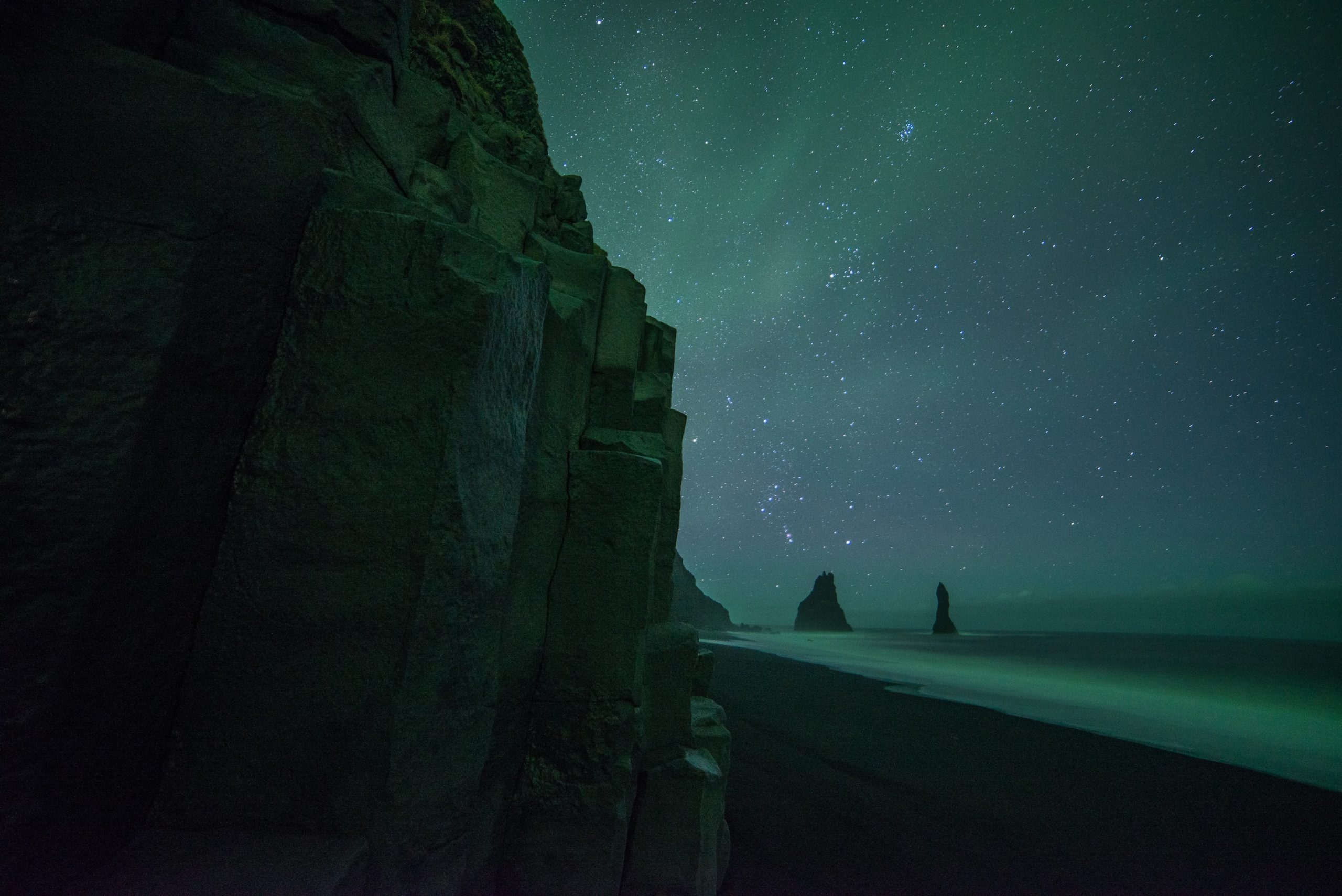If you’re looking for some black sand to aurora watch from, look no further. With nearly 5000 km. of coastline, Iceland has you covered.
Picture it. Destination: black sand beach Iceland. Sparkling dark sand is the gift of many volcanic hotspots, but up here in the North, Iceland is among the few. Imagine the incredible darkness of sitting on the velvety black sand, while auroras dance in the black night.
Aside from the mystical moving lights, the only thing you can see are the stars and the white surf. It’s not a sight to miss, so we’ve gathered up a few of our favorites. Many things are otherworldly about black sand Iceland- but this is surely one of the most surreal.
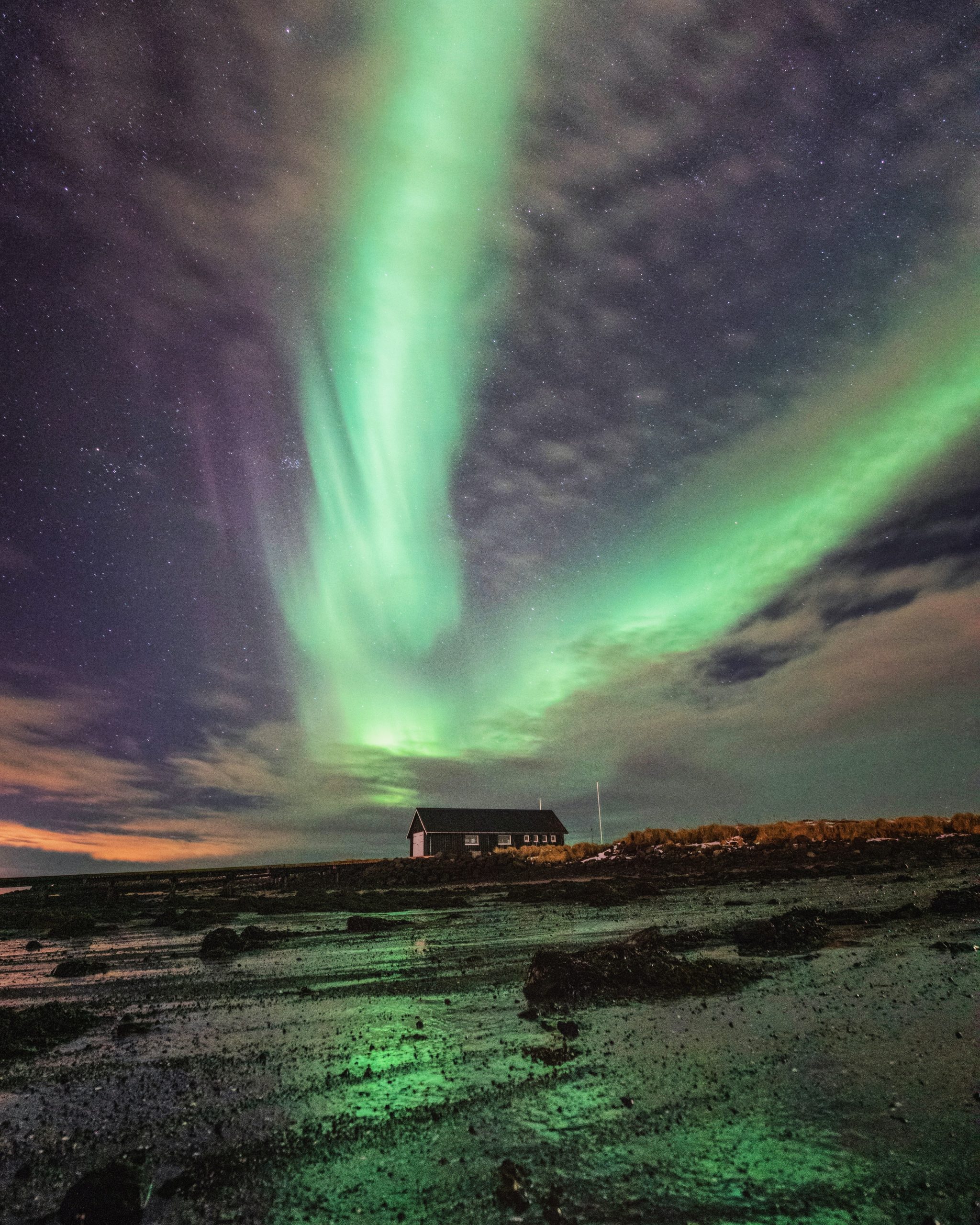
1. Seltjörn, Ægisíða, and Kirkjusandur: The City Coast
Despite Reykjavik’s cosmopolitan appearance, this is a seaside town. And with the sea, comes miles and miles of coastline. There are many places where you can’t access the water because of barriers, big rocks, or just a lack of places to stand, but these are not among them.
These three beaches represent only a fraction of the accessible coast, but they are gorgeous hideaways to stroll in the sunlight. (Or the moonlight, if you’re keeping an eye out and watching the tide.) If you’re enjoying a walk on the seafront paths, you can find Seltjörn and Kirkjusandur at either end of it.
Kirkjusandur is the closer beach to the city center, and like many city spots, depending on the tide it may or may not be there when you arrive! It is a good reminder that despite our concrete home, we are never too far from nature in black sand beach Iceland.
If you find yourself down by Grótta, you will have plenty of time to enjoy Seltjörn. The home of one of Reykjavik’s most notable lighthouses, a nature reserve, and a beloved aurora watching spot- this entire area feels lightyears removed from the hustle and bustle of the city just behind it.
And if you find yourself in Reykjavik’s cozy Vesturbær neighborhood, you can enjoy a walk down Ægisíða. An area of trails and recreation, Ægisíða is a tiny stretch of shore dotted with fisherman’s huts and reminders of a time when a day’s work was a good catch and a small boat.
On a clear day, you can see all the way to Reykjanes from this spot. There are many tiny beaches in the city, some of them with no name at all.
They are all different windows into what life used to be like, with different gifts like sea glass, urchin shells, and long strands of luminous seaweed decorating their shores. And if you’re careful, each one of them is a glorious place to watch for northern lights.
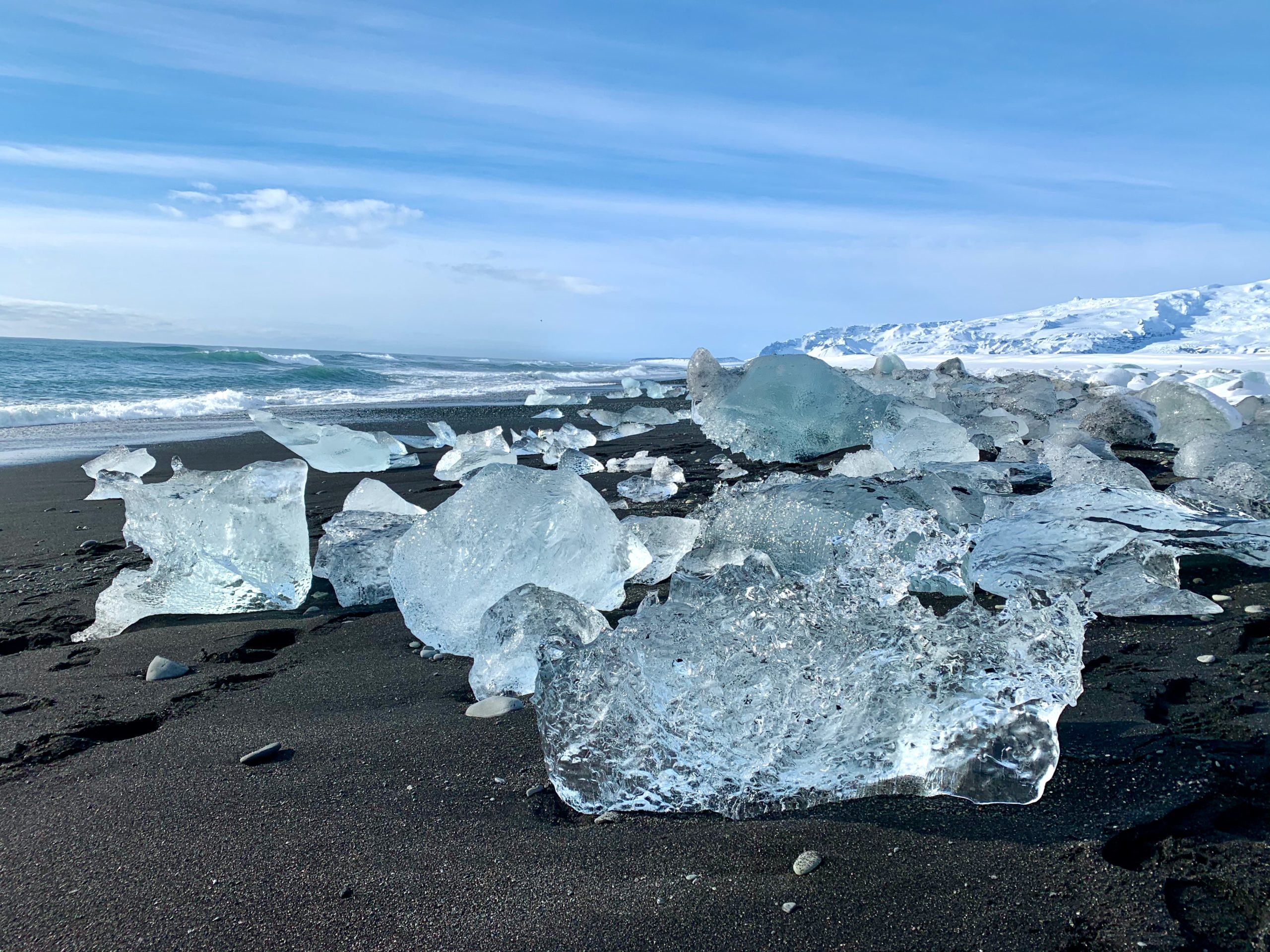
2. The world-famous Diamond Beach, also known as Breiðamerkursandur
When reading about black sand beach Iceland, it’s hard to miss the glory of Diamond Beach. A small piece of the larger Breiðamerkursandur coastline, this is a popular spot. Though it’s a bit of a drive from the capital this is the home of the Jökulsárlón glacial lagoon, and it is from there that the diamonds are provided.
This area is fed by the glacier Vatnajökull, which is so big that pieces of it have their own names. This part of the glacier is called Breiðamerkurjökull. As pieces of ice calve off of the glacier, they fall into the Jökulsárlón lagoon.
From here they travel out to sea, sometimes finding themselves festooned upon the beach there. These enormous chunks of ice bob up and down in the waves, heavy when they’re on the shore, but light as air when they’re being thrown about by the waves.
If you’re visiting black sand beach Iceland- you simply cannot miss a night spent among these titans. Black sand, chunks of ice as big as a man, and the lights coming down to dance on the lagoon.
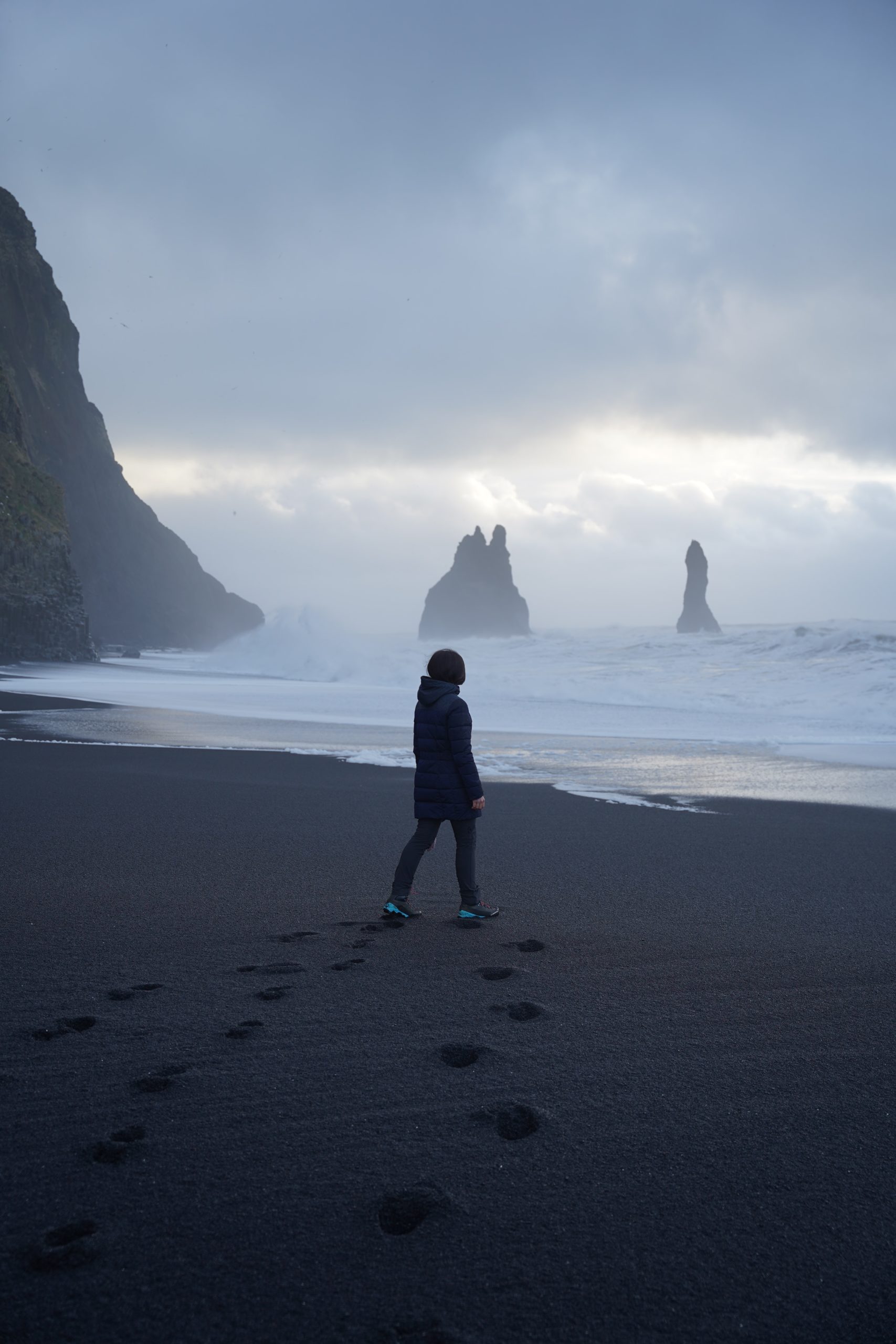
3. Reynisfjara: The postcard beach
A trip to black sand beach Iceland can’t happen without a stop on Reynisfjara. Charting as one of Iceland’s most dangerous beaches due to strong currents and sneaker waves, this beach in front of Vík has been featured in countless films and television shows.
Instantly recognized by its huge basalt caves, rock stacks, and the Dyrhólaey promontory. Iceland’s south coast is one long stretch of beaches and sand deserts. Many of these formed because of powerful volcanic eruptions and the glacial outburst floods (or jökulhlaup) that they created.
Reynisfjara is a great spot for grabbing a bite to eat or staying the night. If you plan to aurora hunt from here, make sure to keep a safe distance from the water. This beach is not staffed and getting caught in a sneaker wave can be deadly.
Fortunately, the town is right up on the beach, and you can watch the aurora from a cozy little bench among the dunes, while you listen to the crashing of the big waves on one of the most famous spots in all of black sand beach Iceland.
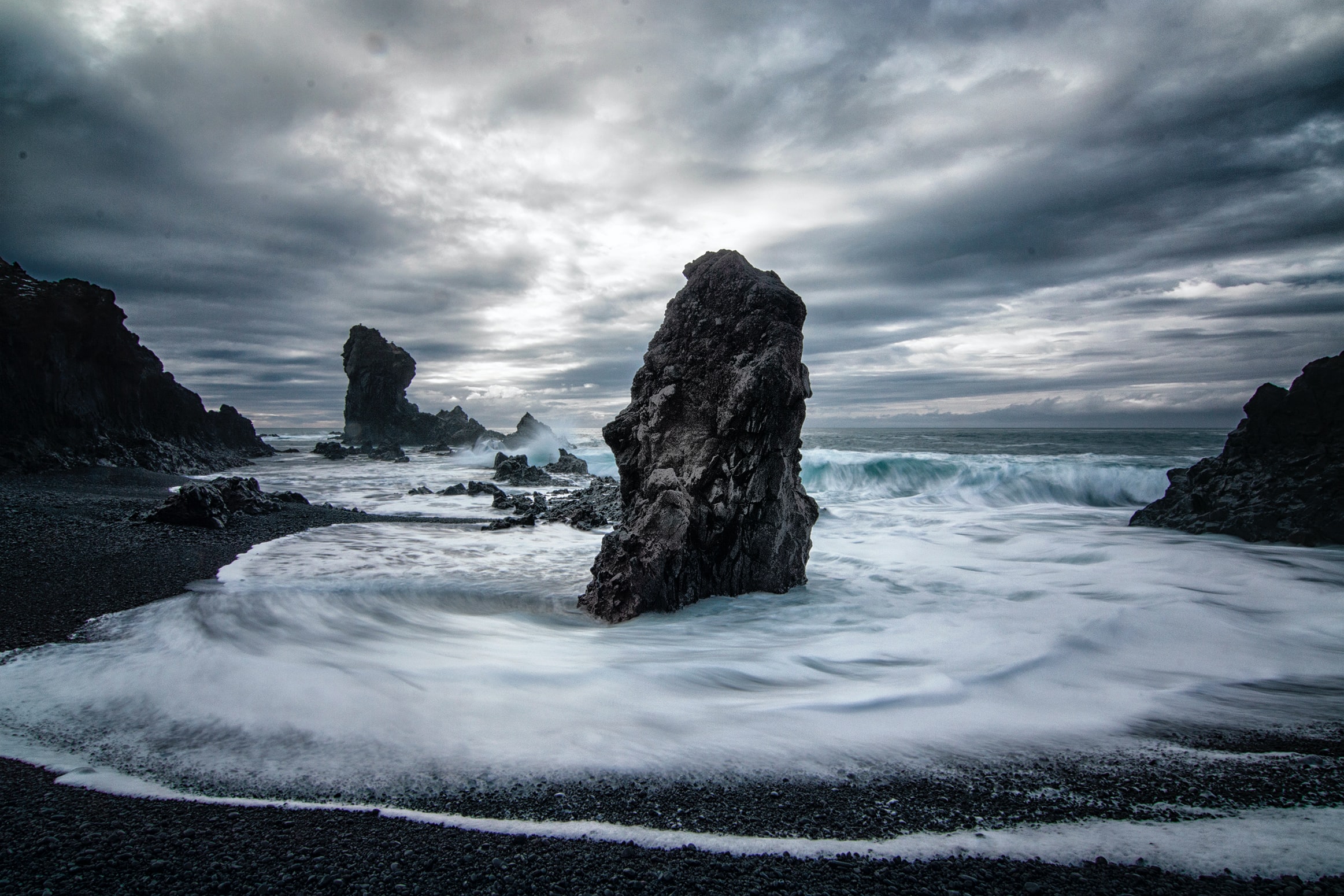
4. Djúpalónssandur at the edge of the world
If you find yourself in Snæfellsnes at the foot of another famous glacier, you must certainly make a stop at Djúpalónssandur. This is a place of many curiosities and treasures in black sand beach Iceland, so tread carefully here.
Located at the edge of the Snæfellsnes peninsula, you’ll find that the sand is hidden under a layer of polished black pebbled. These are Djúpalónsperlur, or the “Pearls of Djúpalón”.
They are protected, and so are the twisted pieces of metal that rest on top of them. These are pieces of the British trawler the Epine GY7, and they rest on this beach in memory of the men that lost their lives in a blizzard there.
This is only one of many stories on this beach, as it used to be an epicenter of activity when fishing was a smaller industry in the hands of the people.
Nearly all of the rock formations, springs, and sea stacks have names and stories, and tales of being elven structures or frozen trolls who saw the daylight. You could spend weeks in these coves learning the history of each mark in the land.
If you’re a history buff or a story lover in black sand beach Iceland, make sure to grab some literature about this area, and leave nothing but footprints in the sand behind you. This is a hallowed place of memories gone by, and a protected zone.
Not to mention, a remote area with similar wave patterns to Reynisfjara. Enjoy the aurora from a safe distance, and be respectful of the different souls that may be watching with you.
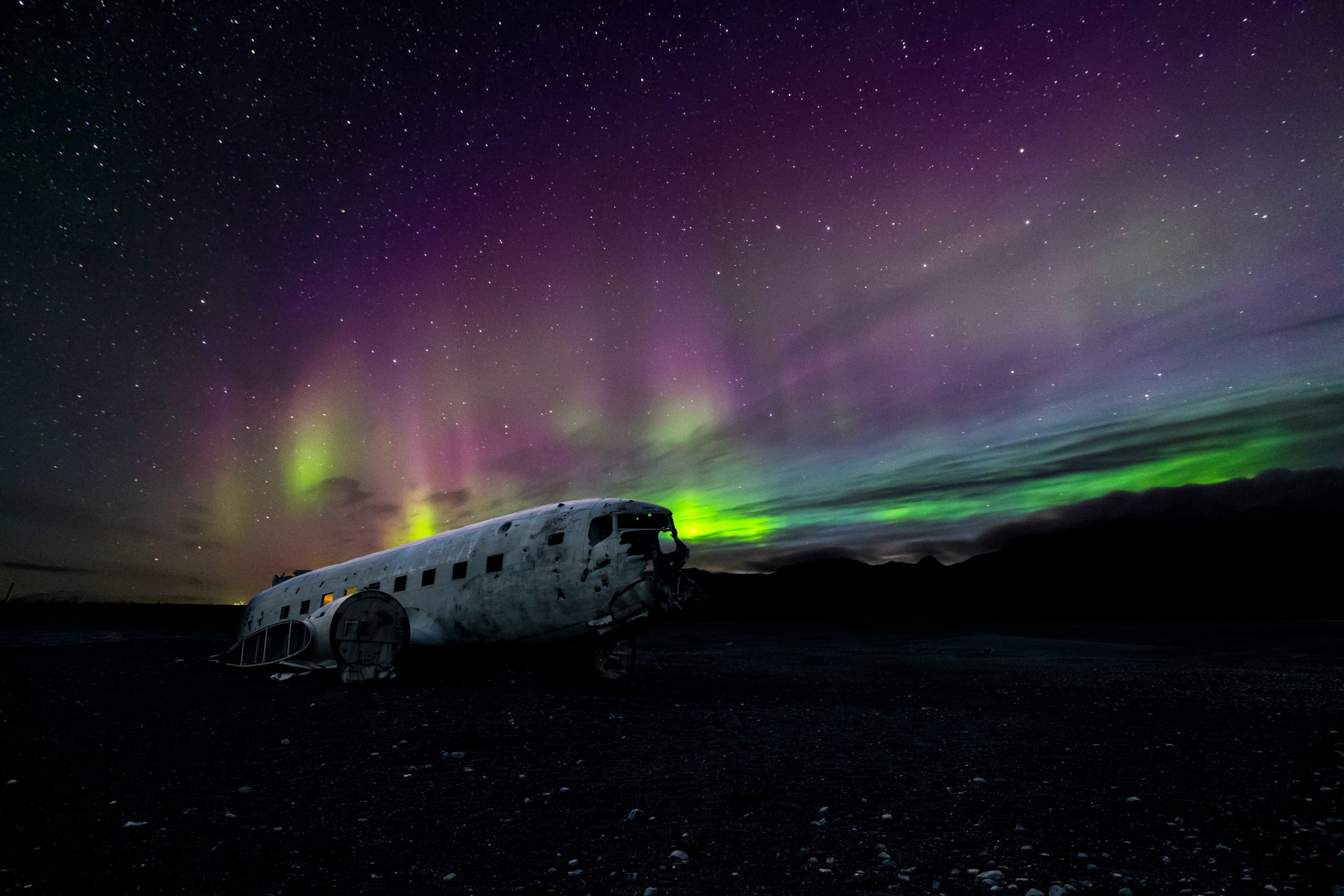
5. Solheimasandur and the plane wreck
There are a lot of beaches in black sand beach Iceland, but this is a special one. A smaller part of the big stretch of the long southern coast, Solheimasandur is another creation of volcanic eruptions creating glacial outburst floods, and the sand flats of this area are vast.
Because of its volcanic history, Solheimasandur is not home to any villages or large settlements. It is, however, home to the US Navy DC-3 plane wreck, a landmark sought by photographers and curiosity seekers alike.
In 1973 due to a fueling problem, this plane crash-landed here on the sand. All parties involved survived, and walked away from this impromptu landing in one piece, so it is not truly a memorial piece.
Getting to the wreck takes a bit of a walk, but it’s worth it to gaze upon this strange visitor among the sands. This is a truly desolate place, so take caution if you are visiting here in the nighttime or the winter season.
It is good to check ahead on the weather, as the sand wastes are disorienting and visitors in the past have gotten lost here. With little to nowhere to hide, it is possible to risk exposure and it is unlikely that you will come across much help.
Though this is a popular northern light photo opportunity, look out for your safety first. Those airmen walked away from this wreck, and in order to enjoy more of black sand beach Iceland, so must you.
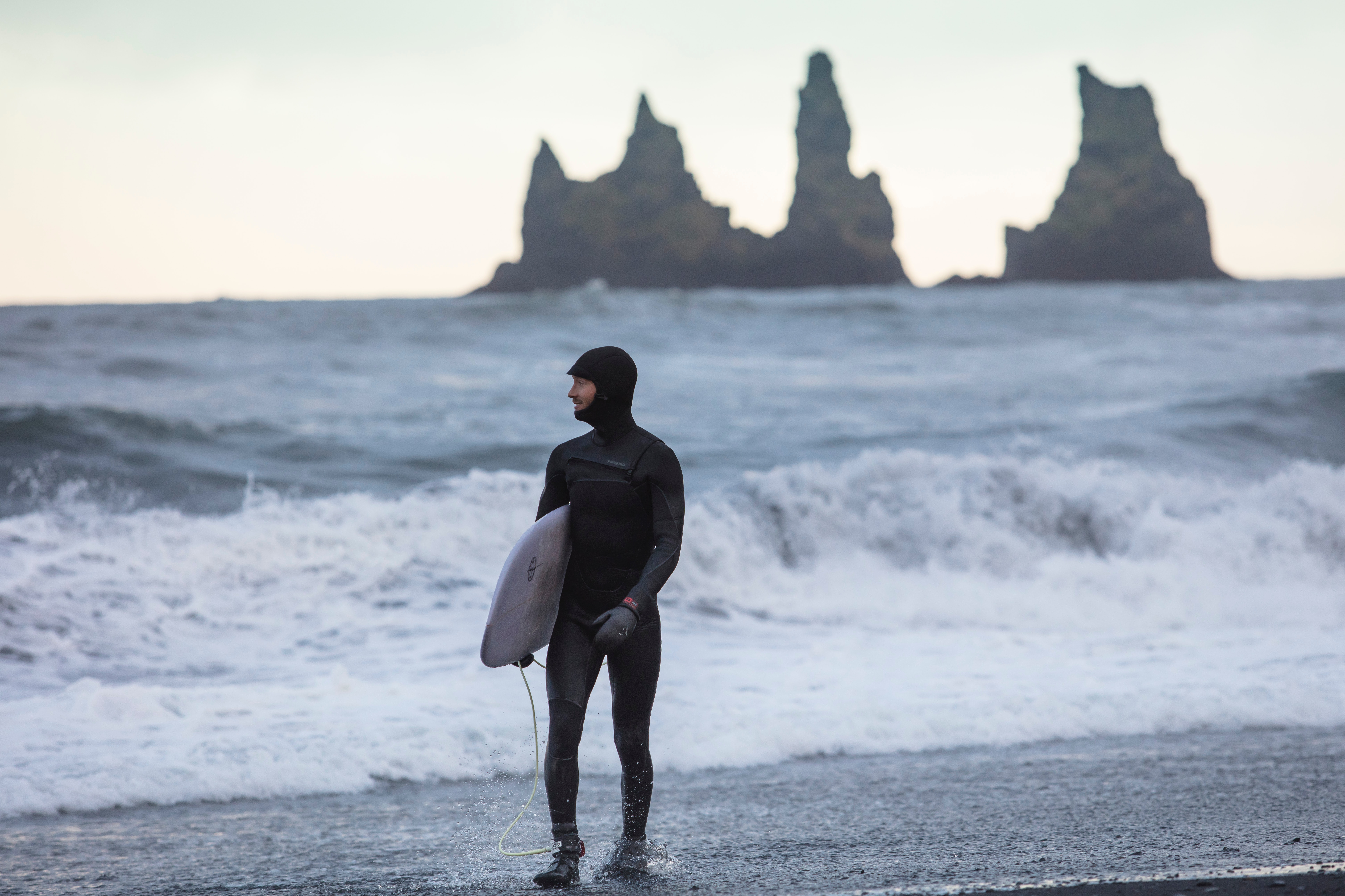
6. Catch a wave on Thorli Beach
The Reykjanes peninsula is known for its big, consistent waves, and believe it or not, is a long time favorite of arctic surfers. Thorli is a fairly advanced spot near the town of Þorlákshöfn (Thorlákshöfn) and it sports an unusual mix of both black and yellow sands.
Beloved by local and visiting surfers, Thorli is a long crescent of sand at the heart of Iceland’s surfing community. And though there are different waves to catch throughout the year, the high point for big surf is right smack in the middle of aurora season.
If you’re a seasoned surfer, this is the beach for you. (And if you’re an aurora hunter- the best of both worlds!)
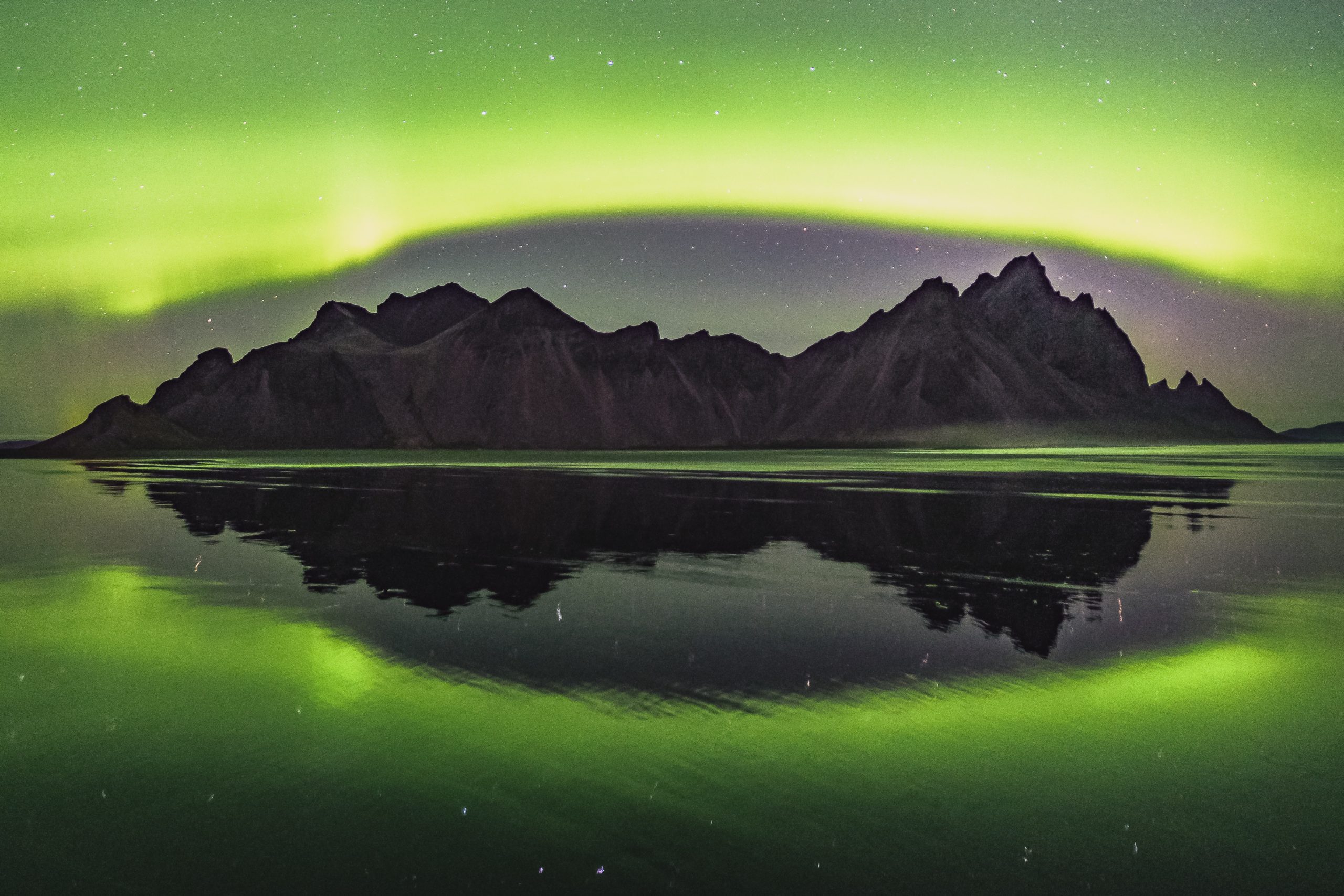
7. Stokksnes the Mirror Beach
Stokksnes is a photographer’s dream. At the eastern edge of Iceland lies the long flat shore of Stokksnes, and the jagged dragon’s-teeth peaks of Vestrahorn. Close to the town of Höfn, this area either welcomes you back to the sand deserts of the south or announces your arrival to the dramatic mountains of the east.
But before you go further either way, you should take a moment to stop at Stokksnes. This beach is wide and flat, which causes the tide to leave water behind as it recedes. This creates a shallow and incredibly reflective surface, allowing incredible reflection pictures of the mountain Vestrahorn, the surreal black dunes, and potentially, the colorful, dancing aurora.
There is a small fee to visit the beach, as it is privately owned land- but it is more than worth it to help preserve the majesty of this place.
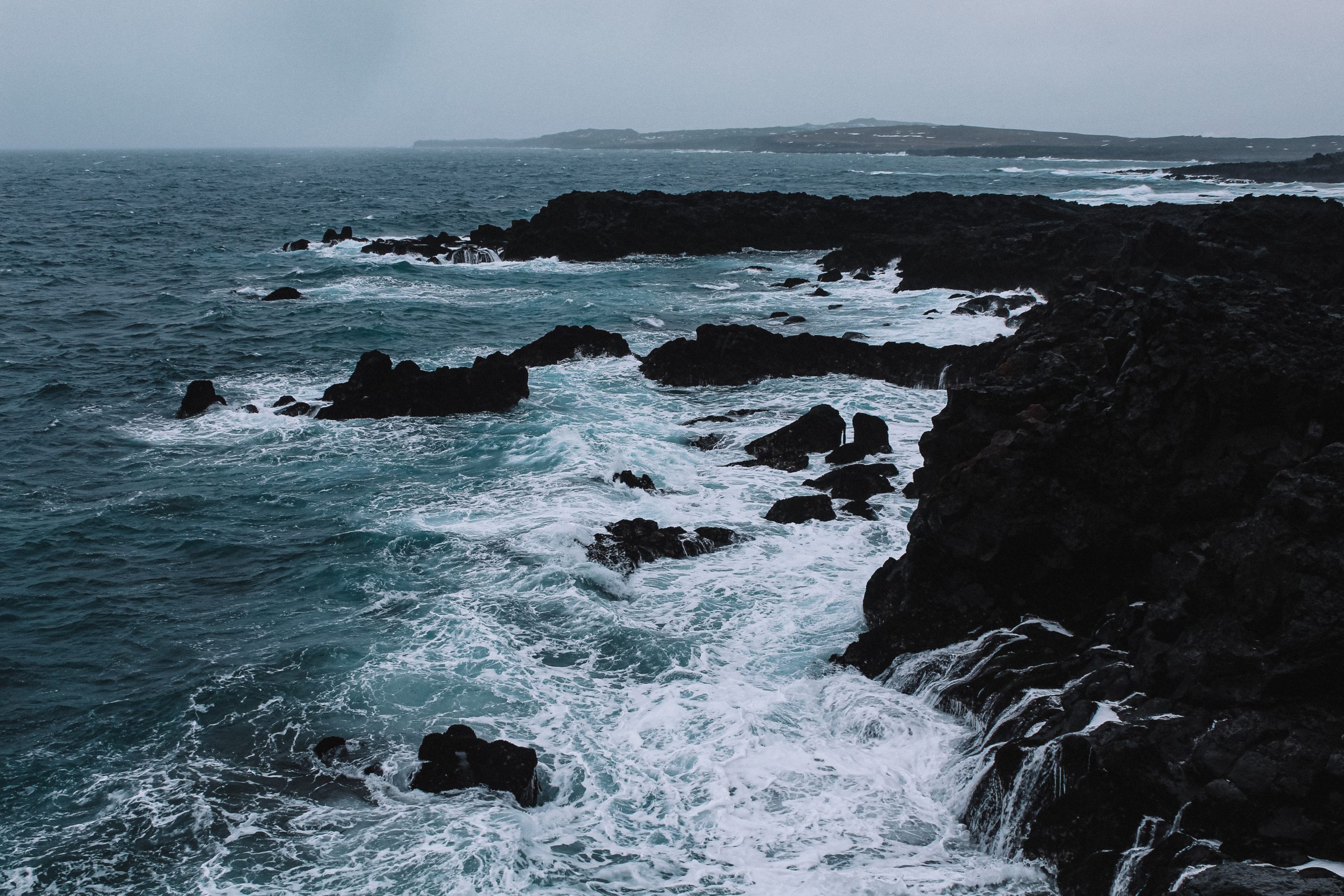
8. Everybody’s gone surfin’...In Sandvík and Grindavík
For those who aren’t ready to catch a big Thorli wave, there is the slightly more forgiving beach break of Sandvík, where many locals catch their first waves. Most of Iceland’s surfing beaches are reef or point breaks, which means you’ll be dodging a lot of sharp volcanic rocks, and maybe some sea urchins.
For those who are only here to watch auroras, you are in great company. The peninsula of Reykjanes boasts long coasts of lonely beaches, and many friendly seaside towns to pick up snacks in.
(Including Grindavík, one of Iceland’s happiest towns! And the nearby neighbor of our recent fissure volcano, Fagradalsfjall.) In black sand beach Iceland, you can’t go wrong with cruising quiet Reykjanes.
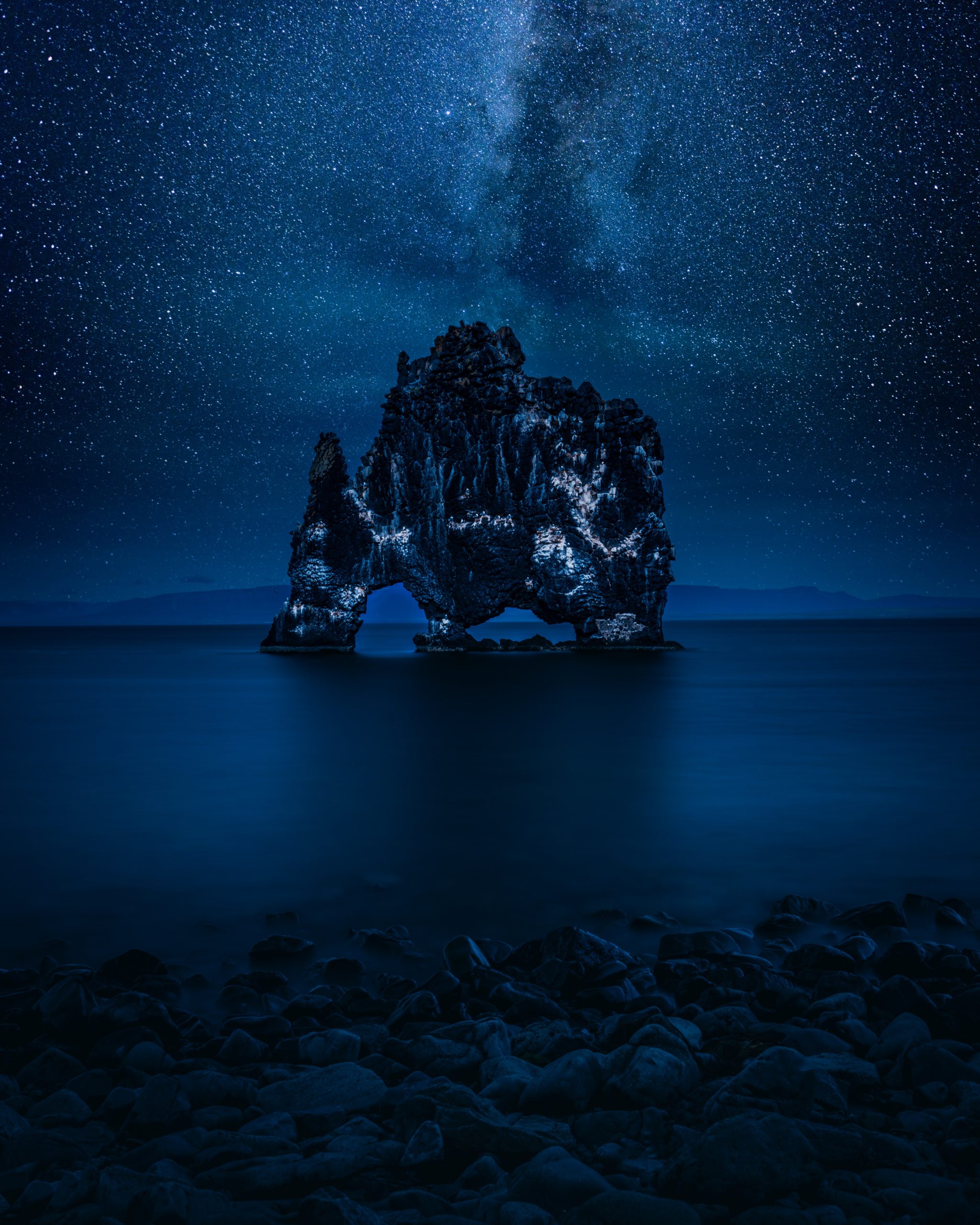
9. The Seal Circle at Vatnsnes
You’ve heard of the Golden Circle, and even the Diamond Circle- but what about the Seal Circle? The 711 road around the peninsula of Vatnsnes is a great spot for black sand, seals, and auroras. If you’re lucky, you can spot harbour seals, grey seals, harp seals, bearded seals, hooded seals, ringed seals, and maybe even a rare walrus or two!
The Illugastaðir beaches on the western side of the peninsula have been a notable home for them for many years, but these creatures can be spied year round throughout the peninsula. It is even possible to see them on the eastern side basking near famous Hvítserkur, a popular aurora photo spot.
You can stop in Hvammstangi to visit the Icelandic Seal Center to learn more about these curious residents, but don’t forget to keep your eyes on the sky. This is a popular aurora spot with low light pollution and many beloved foreground landmarks for great aurora shots.
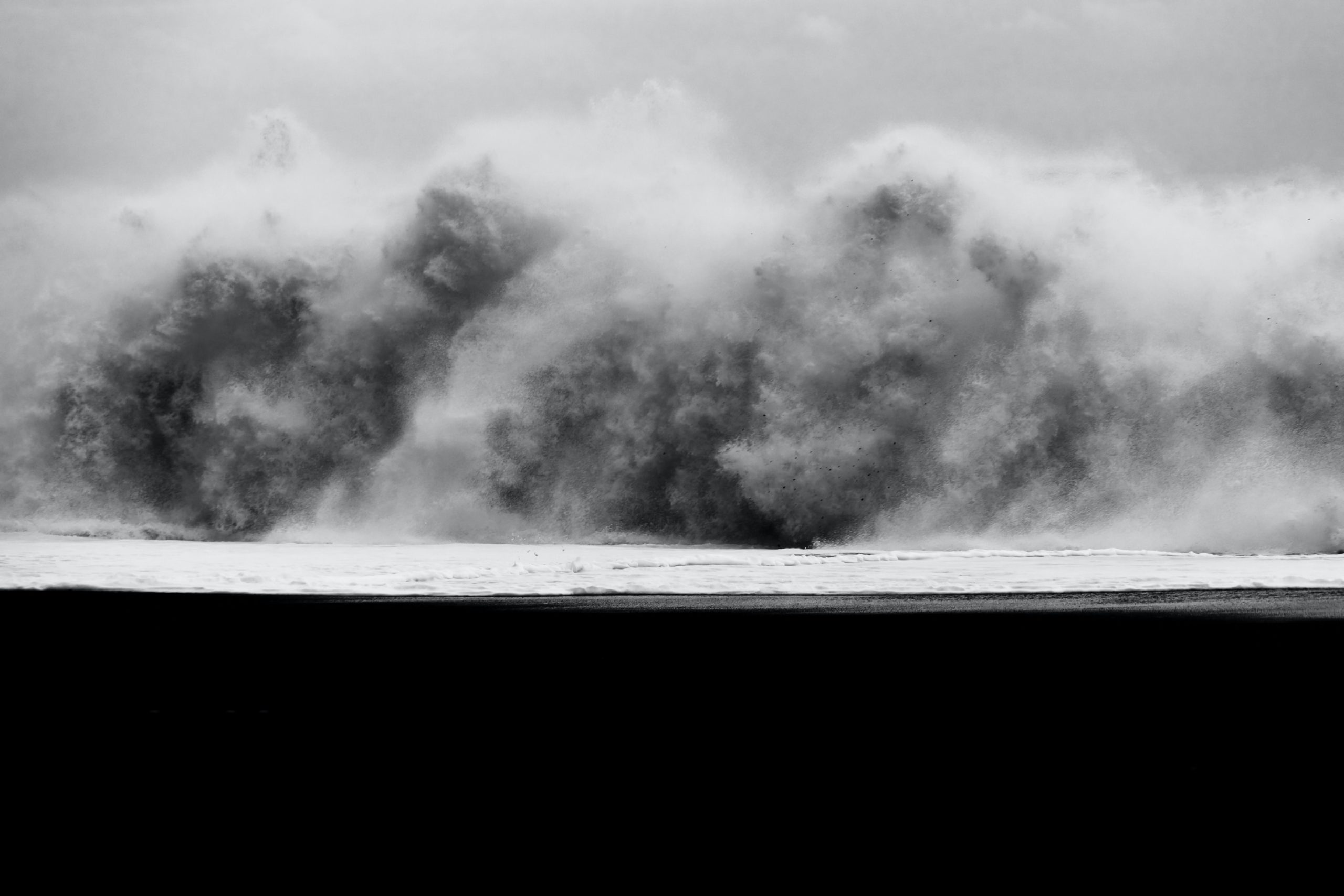
10. Ólafsfjörður on the Arctic Coast Way
North Iceland is a magical place punctuated by a more extreme climate, big mountains, and beautiful small towns throughout the fjords. There is a lot of history and tradition here, and even though it’s not by much- you are that much closer to the pole when you visit.
Ólafsfjörður is located in between the shark fishing village of Siglufjörður in the north, and Dalvík just below- home to world class skiing and “The Great Fish Day” festival (Fiskidagurinn mikli). This is another great peninsula to explore, and you guessed it, every single one of these towns boasts its own piece of black sand beach Iceland.
These are long, picturesque coastlines framed in by tall mountains and sweeping fjord views out to sea. They have long histories and unique cultures, even from village to village. And just like their skiing, when it comes to auroras- they are unparalleled.
